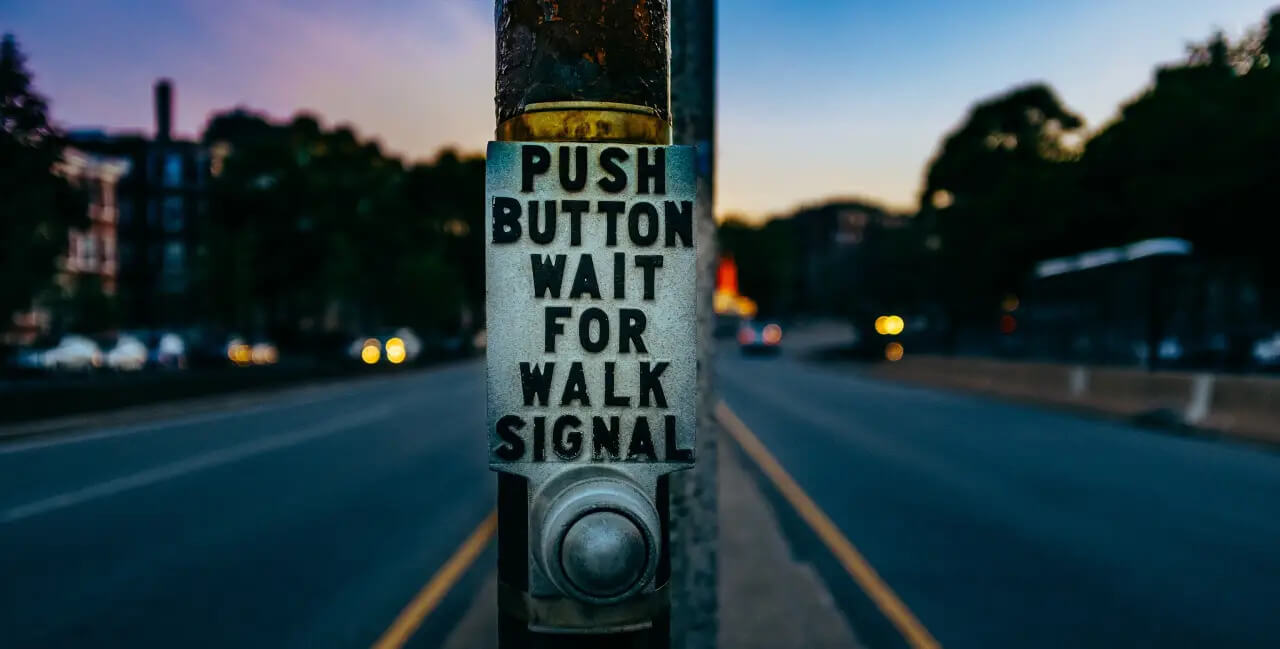Brooke graduated from the University of Richmond School of Law after receiving her undergraduate degree from the University of North Carolina at Chapel Hill. Brooke worked for five years in private practice with a law firm specializing in insurance defense litigation before becoming the trial litigator for Allstate Insurance Company in the metro Richmond area.
You’ve probably heard the phrase, “the pedestrian always has the right of way,” many times in your life. While it is true pedestrians often have the right of way, it is not always the case.
It also does not give a pedestrian carte blanche to act recklessly or negligently when sharing the roadway with motor vehicles.
Sometimes, the pedestrian is the one at fault for the accident. Determining pedestrian versus vehicle fault is a crucial step in a personal injury case.
Suppose you are a pedestrian recently hit by a car or a driver that hit a pedestrian; you probably want to know if you are entitled to recover damages.
Unfortunately, there is no black-or-white answer, and regardless of which party you are, your ability to recover compensation will depend on your case’s particular facts and circumstances.
At River Run Law, our team is dedicated to helping individuals involved in accidents throughout Virginia.
To speak to an experienced pedestrian accident lawyer, please contact us today.
Do Pedestrians Have to Follow Traffic Laws?
It is a common misconception that pedestrians do not have to follow the rules of the road. In Virginia, several motor vehicle statutes apply or relate to pedestrian traffic.
How and Where Pedestrians Can Cross Highways
Pedestrians should cross only at marked crosswalks or intersections as otherwise guided by traffic control devices.
Driver Must Stop for Pedestrians
Drivers must yield to pedestrians when they cross intersections and crosswalks, where speed limits are under 35 miles per hour, when movement is under traffic control devices, when they turn, and when directed by a law enforcement officer. However, pedestrians are not to disregard oncoming traffic.
Pedestrian Control Signals
Pedestrians must obey and follow pedestrian traffic control signals. This means that pedestrians must obey the “Walk” and “Don’t Walk” signals.
But the law states that “any pedestrian who has partially completed his crossing on the Walk signal shall proceed to a sidewalk or safety island and remain there while the Don’t Walk signal is showing.”
Restricted Roadways
Pedestrians are not to use the roadway unless necessary. In other words, pedestrians should use the sidewalks when available.
In an accident involving a motor vehicle and a pedestrian, if the pedestrian caused the accident, they may be the one on the hook for damages.
Common Causes of Pedestrian Accidents
Distracted Walking
Distracted walking is one of the leading causes of pedestrian accidents, especially in populated cities and communities. As we all have probably seen firsthand, one of the biggest distractors is the cell phone.
Pedestrians are often distracted by texting, talking, and browsing on their phones. Individuals texting while walking may forget to stop and look before crossing the street, causing an accident and injuring themselves and others.
Disobeying Traffic Signals
Failing to follow traffic signals is another common reason for pedestrian accidents. One of the most common examples is failing to abide by the traffic lights and crossing when they do not have the right-a-way.
Walking While Under the Influence
Walking while intoxicated by alcohol or drugs can be extremely dangerous. Intoxication can hinder your depth perception, hearing, and ability to walk safely alongside traffic.
A person walking under the influence does not have the physical or mental wherewithal to observe traffic signals and share the road with automobiles properly.
Walking in Restricted Areas
Some areas and roadways are just not meant for pedestrian traffic. For instance, a five-lane freeway is not meant for foot traffic. A pedestrian who ventures onto a highway or interstate poses a grave risk to themselves and the drivers.
Jaywalking
Jaywalking refers to a pedestrian crossing the street other than in the designated crosswalks. This can lead to the pedestrian crossing the roadway in a spot where a turning driver cannot see them until it’s too late.
Crossing Without a Clear View
Crossing with an obstructed view is yet another way pedestrians may find themselves the cause of an accident. There may be buildings, construction, vegetation, or signs that prevent a driver from seeing a pedestrian and a pedestrian from seeing an oncoming vehicle.
When a pedestrian accidentally, negligently, or intentionally disobeys traffic laws, it can lead to severe accidents and injuries. If an investigation reveals the pedestrian is at fault for the collision, it may preclude them from recovery.
What Happens If a Pedestrian Caused an Accident?
When determining liability, fault is often the deciding factor. In a pedestrian-vehicle collision determining who is responsible for the accident will determine which party can recover damages.
If the pedestrian is at fault, it may preclude them from compensation for medical bills, lost income, and property damage.
Why Does It Matter Who Was at Fault?
Virginia is a pure contributory negligence state. Pure contributory negligence means that a plaintiff (or any party) may not recover damages if they are just one percent at fault.
In other words, it is an all-or-nothing approach. For instance, if a pedestrian is just one percent at fault for the accident, they may be unable to recover compensation.
As you can see, the ability to receive compensation hinges immensely on which party is at fault for the accident.
How Do You Determine Fault?
Your attorney will investigate the evidence to determine who is at fault for the accident. Common types of evidence used to determine responsibility and liability are as follows:
- Police reports,
- Photos,
- Video surveillance,
- Witness statements,
- Expert accident reconstruction,
- Medical Records, and
- Cell phone records.
Accident investigations and litigation can be complex. It is best to hire knowledgeable and experienced counsel to assist you.
Contact a Virginia Accident Attorney Today
Being involved in an accident can be scary, and the days, weeks, and months that follow may be some of the most difficult. Our law firm offers a truly personalized approach.
We believe in getting to know our clients and building a trusted, compassionate relationship. Our team is uniquely experienced at River Run Law, having spent many years practicing defense work.
Contact us if you or a loved one was involved in a vehicle vs. pedestrian accident. We offer a no-cost, no-obligation consultation.


